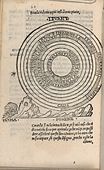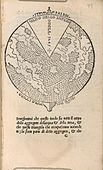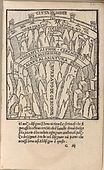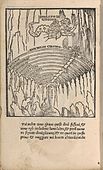User:EVDiam/Sandbox 2
This is my Sandbox 2. Here I save my drafts, unfinished work, etc.
Trie-sur-Baïse
[edit]Trie-sur-Baïse is located in the Hautes-Pyrénées department in south-western France. The royal fortified town of Trie-sur-Baïse, the new Bastide, was founded in 1323 under a contract of a paréage signed by Jean de Trie, Seneschal of Toulouse and representative of the King, the seigneur of Bernard Duffort Manas, the seigneur of Puydarrieux Gerald of Esparros and a representative of the abbey Escaladieu, Father Roger Mauleon.[1] In 1355, the city was sieged and destroyed by the Prince of Wales, better known as Black Prince, as part of his devastating expeditions to the Southwest of France during the Hundred Year War. The reconstruction of the city started in 1365.
The structure of the town follows the classic structure of the Bastide with the central square surrounded by stone houses and shops under the arcades. In some Bastides, the old market structures, the halles- have been replaced by more recent buildings[2]. This is the case for Trie-sur-Baïse, where the central market building was reconstructed using iron.
Villereal
[edit]This article contains material translated [the French Wikipedia's version of this page].
History
[edit]In 1265, Gaston de Gontaut-Biron gave part of the Montlabour forest to the Count Alphonse de Poitiers, brother of the King Louis IX of France and Count of Toulouse. The new Bastide was built in the next four years and the King signed a contract in 1269 determining the legal statutes of the Villereal[3]. In addition, Villereal was occupied by the English from 1279 to 1453. King Edward I of England signed the “Charte des Coutumes de la Cité” on April 20th, 1288, which protected the inhabitants and set the rules of life in the village community. Due to this charter Saturday was fixed as the market day.
More Reading
[edit][[1]]
Beaumarchés
[edit]Beaumarchésis, is a french commune in the Gers department of the Midi- Pyrénées region in southwestern France.
History
[edit]Beaumarchésis, bastide, was founded in 1278 under the authority of Philippe III, the Bold, who was the King of France from 1270 to 1285. The gothic church of Norte Dame was built between XIV and XVI century. The construction started with Philippe IV Le Bel and was completed gradually during the next centuries. It is a single, 38 meters long space and was designed to provide shelter in case of attack. Its exterior resembles a fortification as much as a place of worship. work with FR-wikipedia
=Structure
[edit]Villereal structure follows the basic plan of Bastides. It has 8 main streets, set at right angles, surround the large central square. The “halle”, the main market building is spacious and with an unusual wattle and upper storey. Villereal is a great example for those who believe arcades were not part of the original design. The exterior stairs lead to upper levels of marketplace buildings. Villereal’s exterior stairways would be necessary only if arcades were added to an existing building, since they provided access to the room above the street.
Several Bastides were more than mere market places for the sale of farm products and locally produced goods. At Villereal there was a single-story hospital for lepers.
Image Template-use rationale for Claire Holt
[edit]| Description |
Image description |
|---|---|
| Source |
Source |
| Article | |
| Portion used |
This is a low resolution reproduction from the original image. |
| Low resolution? |
Yes |
| Purpose of use |
This image serves as the primary means of visual identification of the subject. It illustrates biographical articles about the people illustrated in this photo. |
| Replaceable? |
In case of a free equivalent, this image will be replaced by a free one. |
| Other information |
The Division of Rare and Manuscript Collections, Cornell University Library is the repository of the photograph as a physical artifact, but does not hold the copyright. As the rightsholder cannot be determined with the information currently available, this photograph is considered an orphan work. Cornell University can neither grant nor deny permission for its publication. |
| Fair useFair use of copyrighted material in the context of article//wiki.riteme.site/wiki/User:EVDiam/Sandbox_2true | |
 | This photograph is copyrighted and is NOT under a free license. However, it is believed that the use of this work:
qualifies as fair use under United States copyright law. Any other uses of this image, on Wikipedia or elsewhere, may be copyright infringement. See Wikipedia:Non-free content and Wikipedia:Copyrights. | ||
| |||
New article
[edit]Michelangelo Caetani, Duke of Sermoneta and Prince of Teano (Rome, 20 March 1804- Rome, 12 December 1882) was a notable political figure and an Italian scholar with great interest in literature, sculpture and goldsmith.
He was a descendant from the Italian noble Caetani family, which played a great role in the history of Pisa and Rome.[4] According to the practice of his time, he was educated at home by private tutors. However, his interest in arts led quickly him to study in the studios of sculptors Bertel Thorvaldsen and Pietro Tenerani, the painter Tomasso Minardi and the goldsmith Fortunato Pio Castellani.[5] Τhe last of the three transformed Caetani’ s drawings into actual antique-style jewelries which today are partly preserved in the National Etruscan Museum in Rome. Caetani was also a scholar of Dante Alighieri.[6] He published relevant works, such as La Materia nella Divina Commedia and Carteggio Dantesco and designed a series of topographic maps to be used by students of the Divine Comedy.[7]
He was a cosmopolitan. His house was the meeting place of national and international scholars, such as François-René de Chateaubriand, Stendhal, Henry Wadsworth Longfellow, Franz Liszt, Honoré de Balzac, Renan, Hippolyte Taine, Frédéric Ozanam, Jean-Jacques Ampère, George Ticknor, Ferdinand Gregorovius, Alfred von Reumont, Démosthène Ollivier.[8] In 1840, Caetani married the Polish Countess Calixta Rzewvski; the granddaughter of Wenceslas Severyn Rzewuski, a well-known Polish orientalist. Their son, Onorato was Minister of Foreign Affairs of the Kingdom of Italy; and their daughter Ersilia was an archaeologist and the first woman who was admitted to the oldest scientific academy, the Accademia Nazionale dei Lincei. His second wife was the English Margherita Knight and his third was Enrichetta Ellis, the daughter of Lord Howard.
His political views subscribed to the ideology of moderate liberalism. He did not condone extremists and he was aligned with Pellegrino Rossi. He served as Minister of police in the government of Cardinal Bofondi (1846-1848), in collaboration with Carlo Troya and Michele Amari. After the capture of Rome and its annexation to Italy as its third capital, Caetani became the Governor of Rome.[9] He was elected twice to the Italian Parliament and was awarded the Supreme Order of the Santissima Annuziata due to his service to the kingdom of Italy.
Works
- Sermoneta, M. Caetani. (1821). La materia della Divina commedia di Dante Alighieri dichiarata in VI tavole: da Michelangelo Caetani. Nuova ed. a cura di G. L. Passerini. Firenze: G. C. Sansoni.
- Sermoneta, M. Caetani. (1852). Della dottrina che si asconde nell'ottavo e nono canto dell'Inferno della Divina Commedia di Dante Allighieri: esposizione nuova di Michelangelo Caetani. Roma: Menicanti.
- Sermoneta, M. Caetani. (1881). Tre chiose di Michelangelo Caetani duca di Sermoneta nella Divina Commedia di Dante Alighieri. 3. ed. Roma: Salviucci.
- Sermoneta, M. Caetani. (1857). Matelda nella divina foresta della Commedia di Dante Allighieri: [Purg. xxviii]; disputazione tuscalana. [Roma: Salviucci.
- Società dantesca italiana. (1900). La lettera di Dante in Or San Michele e la Fondazione Michelangelo Caetani di Sermoneta. Firenze: L. Franceschini.
Letters
- Sermoneta, M. Caetani. (1902). Epistolario. Firenze.
- Sermoneta, M. Caetani. (1903). Epistolario del duca Michelangelo Caetani di Sermoneta: corrispondenza dantsca. Firenze: [F. Lumachi, succ. flli. Bocca].
- Sermoneta, E. Caetani. (1904). Alcuni ricordi di Michelangelo Caetani, duca di Sermoneta. 2. ed., popolare. Milano: U. Hoepli.
- Fiorella Bartoccini (a cura di). (1974). Lettere di Michelangelo Caetani duca di Sermoneta: Cultura e politica nella Roma di Pio IX. [Roma]: Istituto di studi romani.
Bibliography
- Bartoccini, Fiorella (1973). "Caetani, Michelangelo". Dizionario Biografico degli Italiani. 16.
- "Caetani Family". Encyclopædia Britannica Online. Encyclopædia Britannica Inc. Retrieved 9 November 2015.
- Ghisalberti, Alberto Maria (1930). "Caetani, Michelangelo". Treccani, La cultura Italiana. Enciclopedia Italiana. Retrieved 9 November 2015.
- Nazzaro, Pellegrino (2008). Fascist and anti-fascist propaganda in America : the dispatches of Italian Ambassador Gelasio Caetani. Youngstown, N.Y.: Cambria Press. ISBN 9781934043660.
Mode, PJ. "The Collection". Persuasive Cartography, The PJ Mode Collection. Cornell University Library. Retrieved 22 October 2015.
- Soros, Susan; eds, Stefanie Walker, (2004). Castellani and Italian archaeological jewelry. New Haven [u.a.]: Yale Univ. Press. pp. 165–168. ISBN 9780300104615.
{{cite book}}: CS1 maint: extra punctuation (link) CS1 maint: multiple names: authors list (link) - "News Bulletin of the Italy America Society". Italy America Society (22): 2. December 1922.
Further Reading Further Reading Chabod, F. & McCuaig, W.(2014). Italian Foreign Policy: The Statecraft of the Founders, 1870-1896. Princeton: Princeton University Press.
Gallery
[edit]Dialogo di Antonio Manetti (1423 – 1497) cittadino fiorentino circa al sito, forma, et misure dello inferno di Dante Alighieri poeta excellentissimo. [Florence: F. Giunta, 1510?].
-
Allegorical Map with navigation symbols of the "Voyage of Youth to the Land of Happiness", by Auguste-Jacques Lemierre d'Argy in 1802.
-
Christian allegorical map of "The Journey of Life, or an Accurate Map of the Roads, Counties", Towns &c. in the Ways to Happiness & Misery, by Esq George Wright, 1775
Artwork Template_PJModeCollection
[edit]
Commons
[edit]
Doris Chase
[edit]Addded in Doris Totten Chase,
Chase was encouraged by the video artist, Nam June Paik, to explore video art[11] and during 1973 to 1974, she participated in the Experimental Television Center’s Residency Program.[12][13]
- ^ "La Bastide de Trie sur Baïse et Le Monastère des Carmes". Les Nuits Musicales de Trie sur Baïse. Retrieved 14 June 2016.
- ^ "An Introduction to Bastides (PPT), at About The Bastides". John Reps Collection. Cornell University Library. Retrieved 14 June 2016.
- ^ "Villeréal - Tourism, Holidays & Weekends". France-Voyage.com. Retrieved 2016-06-14.
- ^ "Caetani Family". Encyclopædia Britannica Online. Encyclopædia Britannica Inc. Retrieved 9 November 2015.
- ^ Ghisalberti, Alberto Maria (1930). "Caetani, Michelangelo". Treccani, La cultura Italiana. Enciclopedia Italiana. Retrieved 9 November 2015.
- ^ Soros, Susan; eds, Stefanie Walker, (2004). Castellani and Italian archaeological jewelry. New Haven [u.a.]: Yale Univ. Press. pp. 165–168. ISBN 9780300104615.
{{cite book}}: CS1 maint: extra punctuation (link) CS1 maint: multiple names: authors list (link) - ^ "News Bulletin of the Italy America Society". Italy America Society (22): 2. December 1922.
- ^ Bartoccini, Fiorella (1973). "Caetani, Michelangelo". Dizionario Biografico degli Italiani. 16.
- ^ Nazzaro, Pellegrino (2008). Fascist and anti-fascist propaganda in America : the dispatches of Italian Ambassador Gelasio Caetani. Youngstown, N.Y.: Cambria Press. ISBN 9781934043660.
- ^ Mode, PJ. "The Collection". Persuasive Cartography, The PJ Mode Collection. Cornell University Library. Retrieved 22 October 2015.
- ^ "The Doris Chase collection" (PDF). The Museum of Modern Art. MOMA-Department of Film The Celeste Bartos International Film Study Center. p. 2. Retrieved 8 July 2015.
{{cite web}}:|archive-date=requires|archive-url=(help); Check date values in:|archivedate=(help) - ^ "Chronological History of the Center: 1969-present". Experimental Television Center, LTD. Retrieved 8 July 2015.
- ^ Doris Chase's artworks can be found in the Experimental Television Center Archive, in the Rose Goldsen Archive of New Media Art, Cornell University Library
Updating an existing article
[edit]Rose Goldsen Archive of New Media Art is a research repository for new media art. It was founded in 2002 by Timothy Murray, Professor of Comparative Literature and English and Director of the Society for the Humanities.[1] It is located in the Division of Rare and Manuscript Collections at Cornell University Library and it is named in the honor of the late Prof. Rose Goldsen, a Sociology Professor at Cornell University and an avant-garde critic of pop culture, mass media and communication. The Rose Goldsen Archive provides access to detailed archival material that mirrors the historical changes which have happened in new media art in terms of its technological development and experimentation, throughout the years.[2]
General Collection
The archive’s collections include multimedia artworks that reflect the transformation of new media art practices from analog to disc-based and from there to networked and web-based application during the past decades. [2] The collections combine artworks produced on CD/ DVD-Rom, VHS/digital video and internet (online and offline holdings) as well as supporting materials, such as unpublished manuscripts and designs, digital and photographic documentation of installations and performances, digital ephemera, interviews, photographs, catalogues, monographs, and resource guides to new media art. [3] The general collection consists of various material about audio/ sound art, eco/ bio art, exhibitions and artist compilations, installations, interactive narrative and poetry, online listserv and internet art journals, performance, theory and critic, video art and cinema. A few artists whose work can be found in the general collection are: Hershman Leeson Lynn, Hill Gary, Iimura Takahiko, Lister Ardele, Snow Michael, Janet Cardiff, Chantal Akerman, Tashiro Charles, Barbier Annette, Jennifer and Kevin McCoy, Shu Lea Cheang, Quintanilla Grace.
Special Collections
Apart from the general collection, the Rose Goldsen Archive of New Media Art houses many special collections and fellowship competitions. Some of them are the following:
The Renew Media Fellowships in New Media, an annual competition for interactive dynamic media, was funded by Rockefeller Foundation in New Media Art from 2002. The Goldsen Archive serves as the repository for the digitized copies of this competition material, such as the proposals, slides, artists’ portfolios, other supportive material, etc. from 2003 to 2008.[4]
The Wen Pulin Archive of Chinese Avant-Garde Art, a collaboration among the Goldsen Achive, the Charles W. Wason Collection on East Asia at Cornell University Library and the Dongtai Academy of Art in Beijing, China consists of 360 hours of videotape that documents Chinese contemporary art, installation, performance, video, and rock n' roll from 1985-2002.[5] Some of the artists that are showcased in the collection are: Cui Jian, Du Zhenjun, Feng Mengbo, Li Xianting, Lin Yilin, Lu Shengzhong, Mou Sen, Song Dong, Song Yongping, Mou Sen, Song Yongping, Xing Danwen, Xu Bing, Yu Xiaofu, Zhang Dali, Zhou Shaobo, Chen Lingyang[6].
The Yao Jui-Chung Archive of Contemporary Taiwenese Art contains the Taiwanese artist Yao Jui-Chung’s portfolio, 8,000 images of Contemporary Art Exhibition Postcards and Taiwan performance art[7].
The "ETC: Experimental Television Center Archives" [8] is a collection with more than 3,000 artistic video tapes and DVDs. It contains works by artists from both the contemporary and first generation of video art. The Rose Goldsen Archive of New Media Art has served as a repository for the Experimental Television Center's collection (1969-2011), since 2011. Some of the artists that are showcased in the collection are Barbara Hammer, Gary Hill, Jud Yalkut, Aldo Tambellini, Benton_C_Bainbridge, Irit_Batsry, Alan_Berliner, Kristin Lucas, Lynne Sachs, Michael_Betancourt, Abigail_Child, Laurence_Gartel and Barbara Lattanzi, Emergency_Broadcast_Network, Nam June Paik, Kathy High,etc. [8]
Net Art: The Goldsen Archive provides access to a number of internet art collections. It is the off-line repository for the Turbulence.org archive[9], a project of New Radio and Performing Arts, Inc. (NRPA), the Computerfinearts.com and the Infos 2000. In addition, the Archive serves as an on-line repository for the online journal of net.art, CTHEORY Multimedia[10] and the Ecopoetics online exhibition[11].
Access
Any registered user has access virtually to all the Goldsen materials and can study them at length in an on-site reading room. Apart from the library’s online catalog, the Goldsen Archive is also available through the WorldCat global catalog.
Preservation
Because of the fragility and the complexity of the artworks, [12] most of which are born-digital and many of which interactive, the Archive’s main focus is on building archival strategies that endure the continuous access to all this fragile material. The Goldsen Archive is one of the six international digital art archives dedicated to Preservation and Documentation Strategies; other similar archives are Ars Electronica, Tate Intermedia, FACT, computerfinearts.com (which has its repository in Goldsen Archive) and Rhizome Artbase.[13] In addition, the Archive has signed the International Declaration "Media Art Needs Global Networked Organization and Support", sponsored by Media Art History. Org.[14] The Goldsen Archive has completed a National Endowment for the Humanities-funded preservation initiative that aims to make the access to complex interactive and digital born media artworks simple and more reliable which will allow these artworks to be used and viewed on modern computers. [15]
More Reading
- Murray, Timothy. "The Archival Event: Thinking Electronic Art Via Cornell's Goldsen Archive of New Media Art". Intelligent agent. 6 no. 2 (Pacific Rim). Retrieved 18 June 2015.
- Ferro, Renate; Murray, Timothy (2009). "Tinkering with the Archive: Pathways to Conceptual Thought and Digital Practice". Digital Arts and Culture 2009. UC Irvine: Digital Arts and Culture 2009. Retrieved 22 June 2015.
- Desiree Alexander and Dianne Dietrich, Alex Duryee, (2014, March). “Developing a Preservation Framework for Complex Digital Artworks”. Presented at New England Archivist’s Annual Meeting, #NEAsp14. Portsmouth, New Hampshire: New England Archivist.
References
[edit]- ^ Murray, Tim. "Bio of Tim Murray". Society for the Humanities. Cornell University. Retrieved 16 June 2015.
- ^ a b "Narrative Section of a Successful Application" (PDF). National endowment for the humanities, Division of Reservation and Access. National endowment for the humanities. Retrieved 16 June 2015.
- ^ Murray, Timothy. "About the project". Rose Goldsen Archive of New Media Art. Cornell University Library. Retrieved 18 June 2015.
- ^ "Renew Media/Rockefeller Foundation Fellowships in New Media Art". Rose Goldsen Archive of New Media Art. Cornell University Library. Retrieved 18 June 2015.
- ^ "Chinese Avant Garde Art Archive". Chinese Avant Garde Art Archive. Cornell University. Retrieved 18 June 2015.
- ^ "Biographies". Chinese Avant-garde Art Archive. Cornell University. Retrieved 24 June 2015.
- ^ "Yao Jui-Chung Archive of Contemporary Taiwanese Art". Rose Goldsen Archive of New Media Art. Cornell University Library. Retrieved 24 June 2015.
- ^ a b "Video library and archives of the Experimental Television Center (ETC)". ETC, Rose Goldsen Archive of New Media Art. Cornell University Library. Retrieved 18 June 2015. Cite error: The named reference "ETC" was defined multiple times with different content (see the help page).
- ^ Murray, Timothy. "NEA Collaboration Grant: Turbulence + Rose Goldsen Archive of New Media Art". HASTAC:Humanities, Arts, Science and Technology Alliance and Collaboratory. HASTAC. Retrieved 18 June 2015.
- ^ Kroker, Arthur; Kroker, Marilouise; Murray, Timothy. "About the journal". CTHEORY MULTIMEDIA. Cornell University Library. Retrieved 24 June 2015.
- ^ Murray, Timothy; Shevory, Tom; Zimmermann, Patricia. "Ecopoetics Online Exhibition". Rose Goldsen Archive of New Media Art. Cornell University Library. Retrieved 30 June 2015.
- ^ About the fragility of digital media see:"Preservation 101: Media Preservation". Independent Media Art Preservation (IMAP). IMAP c/o Lehman College. Retrieved 18 June 2015. and "EAI Online Resource Guide for Exhibiting, Collecting & Preserving Media Art:Preservation". Electronic Art Intermix. Electronic Arts Intermix. Retrieved 18 June 2015.
- ^ "Digital Art History Databases: Preservation and Documentation Strategies- Archives". Ingo Studio: Paul Hertz. Retrieved 18 June 2015.
- ^ "Media art needs global networked Organisation & support – International Declaration". Media Art History. Media Art History. Retrieved 18 June 2015.
- ^ Casad, Madeleine Imogene (April 2004). "Preservation and Access Framework for Digital Art Objects". D-Lib Magazine: The Magazine of the Digital Research. 20, Number 3/4 (In Brief). doi:10.1045/march2014-contents. ISSN 1082-9873. Retrieved 18 June 2015.
{{cite journal}}: CS1 maint: unflagged free DOI (link)
Article that I created
[edit]Experimental Television Center
Rhea Galanaki-Books
[edit]- (1975). Πλην εύχαρις. Athēna: "Olkos". OCLC 18152669
- (Yet Joyful, Athēna : "Olkos" Press)
Margarita Karapanou-Bibliography
[edit]Done: see Margarita Karapanou
Sandbox Practice
[edit]Being bold is important to Wikipedia.[1][2]
Notes
[edit]- ^ Be bold guideline."Wikipedia, the free encyclopedia", Retrieved April 19, 2015.
- ^ Broughton, John (2008). Wikipedia : the missing manual (1st ed. ed.). Beijing: O'Reilly. ISBN 0-596-51516-2.
{{cite book}}:|edition=has extra text (help)
italic text
Section header
[edit]- one
- two
- three
Subsection
[edit]bulleted list:
- item 1
- item 2
- sub-item
numbered list:
- first item
- sub-item 1
- sub-item 2
- second item
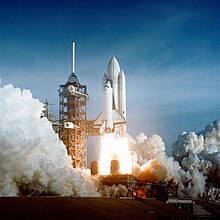
template[citation needed]

